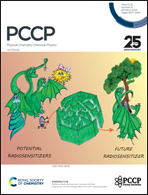A new charge transfer pathway in the MoSe2–WSe2 heterostructure under the conditions of B-excitons being resonantly pumped†
Abstract
Most transition metal dichalcogenide (TMD) heterostructures (HSs) exhibit a type II band alignment, leading to a charge transfer process accompanied by the transfer of spin-valley polarization and spontaneous formation of interlayer excitons. This unique band structure facilitates achieving a longer exciton lifetime and extended spin-valley polarization lifetime. However, the mechanism of charge transfer in type II TMD HSs is not fully comprehended. Here, the ultrafast charge transfer process is studied in MoSe2–WSe2 HS via valley-solved broadband pump–probe spectroscopy. Under the conditions of B-excitons of WSe2 and MoSe2 being resonantly pumped, a new charge transfer pathway through the higher energy state associated with the B-exciton is found. Meanwhile, the holes (electrons) in the WSe2 (MoSe2) layer of MoSe2–WSe2 HS produce obvious spin-valley polarization even under the condition of B-exciton of WSe2 (MoSe2) being resonantly pumped, and the lifetime can reach tens of ps, which is in stark contrast to the absence of A-exciton spin-valley polarization in monolayer WSe2 (MoSe2) under the same pumping condition. The results deepen the insight into the charge transfer process in type II TMD HSs and show the great potential of TMD HSs in the application of spin-valley electronics devices.



 Please wait while we load your content...
Please wait while we load your content...